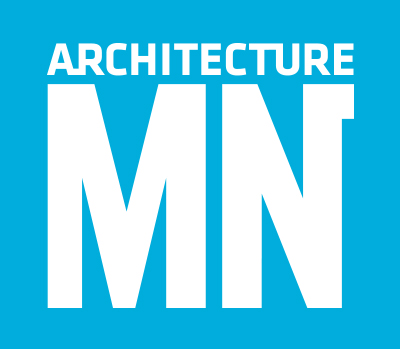The Minneapolis office of Leo A Daly gives an intelligence community campus near the nation’s capital a striking new look
By Joel Hoekstra
The Intelligence Community Campus in Bethesda, Maryland, lies on a wooded bluff overlooking the Potomac River. The stately neoclassical structures of Washington, D.C., are just a few miles away, and the elegant midcentury-modern slab that houses the Central Intelligence Agency in Langley, Virginia, is visible in the distance on a clear day. The brown-brick boxes on the Bethesda campus, by comparison, had always lacked charm.
Constructed in the 1940s, the buildings reflected the institutional aesthetic of their time. Even as the interiors were “hardened” to increase security, and as technology was added to bolster the increased workload of the U.S. Defense Intelligence Agency (DIA), the buildings’ exteriors remained largely unchanged: dull and drab. Finally, Congress authorized design and construction dollars to overhaul the facilities.
But the DIA’s first attempt at a redo failed. The campus adjoins a residential area, and neighborhood groups complained that the initial designs drawn up for the campus remodel were too monolithic. Relenting, the government put out a second request for proposals and eventually awarded the design-build project to the team of Whiting-Turner, Leo A Daly, and URS.
Bill Baxley, AIA, design director of Leo A Daly’s Minneapolis office, says his firm found inspiration in the landscape and in the idea of creating a campus with structures that house multiple functions, rather than a singular building. “We were really concerned about scale and the landscape,” says Baxley. “Those became the drivers.”
The Leo A Daly team proposed a Z-shaped building that would link three existing buildings. The new structure contains the main-entry lobby, a cafeteria, a fitness facility, an auditorium, and several levels of secure operational functions, but from a design perspective its chief function is to connect the existing structures. Baxley refers to it as a “stitch” that pulls the fabric of the campus together. Officially known as the Centrum, it winds its way between two existing buildings and attaches to a third via a multilevel elevated bridge.
Baxley also wanted the campus to feel porous. While most of the DIA’s employees are engaged in work that is hidden behind secured doors and thick walls, safe from prying eyes, nobody wanted the place to feel like a bunker. Using glass wherever possible, the architects created galleries with long, unimpeded views of the surrounding woods. A dining terrace outside the cafeteria overlooks a green roof, and a 14,000-square-foot plaza with linear concrete pavers provides a sunlit spot for meeting colleagues, drinking coffee, or simply enjoying the fresh air.
“We wanted to manage the buildings’ relationship to the landscape in a more humanistic way,” says Baxley. “We also wanted something that looked nongovernmental, so you wouldn’t look at it and think, ‘ah, that’s an FBI building,’ or ‘that’s a CIA building.’”
To further integrate the new building with the existing ones, Leo A Daly clad the Centrum and two other buildings in a composite metal with a deep-red custom coating. The vertically set panels vary in shade, adding texture to the exterior while also keeping the unified campus from appearing monolithic. Tall narrow windows with mirrored surfaces lend additional interest. Seemingly frameless, the windows are set flush with the smooth skin of the building, creating a compelling visual effect. “It messes with your perception, quite honestly. The building looks plastic, almost artificial,” says Baxley. “But it also changes as the light and the sky change.”
Baxley compares the pattern in the cladding to a natural camouflage. It’s mottled and varied like the leaf patterns in the trees surrounding the campus. In the fall, the “camouflage” blends in with the bright foliage; the rest of the year, it disguises the building’s scale and governmental function.
Inside, the interiors are minimalist and sweeping. Bright white and deep black surfaces dominate, but occasionally an orange wall is set at an eye-catching angle. A 500-seat, amphitheater-style auditorium is furnished with orange seats. A smattering of designer lawn chairs populates the plaza. Furnishings and finishes are all simple but of high quality.
In keeping with federal requirements, the Centrum was designed to meet LEED Silver standards. Technology upgrades contribute to the building’s consuming 31 percent less energy than a typical project of its type. In fact, one of the technology investments—solar hot water arrays—was made to help put the campus on a path to net-zero energy use. A 30,000-gallon cistern collects rainwater for reuse in irrigation. And retrofitting existing buildings allowed the government to produce a state-of-the-art facility for roughly 60 percent of the cost of demolition and new construction, according to a DIA official.
In the wake of 9/11, intelligence agencies have worked harder and harder to share information to prevent additional terrorist attacks. Government leaders see the work of the DIA, and by extension the redesign of its campus, as critical to improving interagency cooperation and communication. “I believe this world-class facility is a beautiful addition to the community,” National Intelligence director James Clapper said at the ribbon cutting for the facility last October. “This facility is—in so many ways—the physical manifestation of ‘intelligence integration.’”
INTELLIGENCE COMMUNITY CAMPUS–BETHESDA
Location: Bethesda, Maryland
Client: National Intelligence Agency
Design architect of record: Leo A Daly
Principal-in-charge: Bill Baxley, AIA
Project design team: Bill Baxley, AIA; Tim Duffy, AIA; Linn Bjornrud, AIA; Andrew Graham, AIA; Jessie Bauldry
Design-build contractor: Whiting-Turner Contracting Company
Size: 225,000 square feet new, 500,000 square feet renovated
Completion of new construction: September 2015
Photographer: Bill Baxley, AIA


